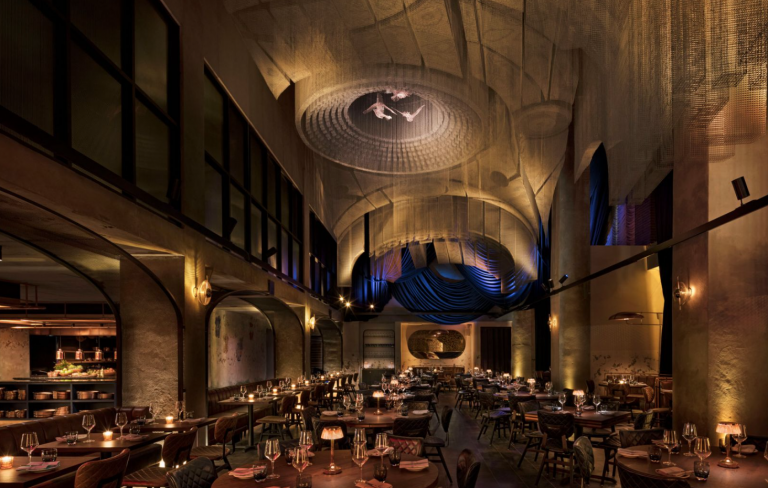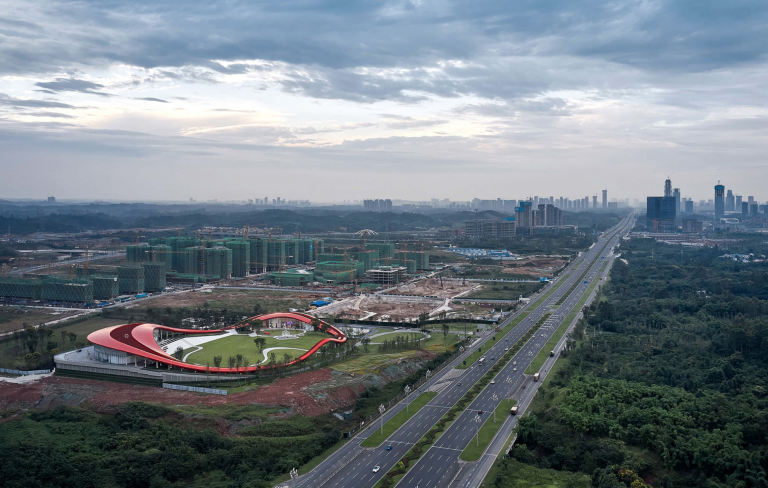Would you like to spend your holidays in Switzerland – but in a stylish atmosphere instead of in monotonous standard holiday flats or styleless chalets? Then you should take a look at the holiday offers of Ferien im Baudenkmal. With this foundation, established by the Schweizer Heimatschutz, it is possible to rent carefully renovated buildings worthy of protection from times long past for stylish Swiss holidays.
There are currently 41 flats and houses on offer
There are currently 41 offers to choose from, which can be used for holidays in almost all regions of Switzerland. Among them are old farmhouses, such as the Maison des Fées in Charmey (FR), a converted barn in Beatenberg (BE), a wonderful 16th century stone house in Brusio (GR), two 17th century Engadine houses in Scuol (GR), the historically valuable Türalihus in Valendas (GR), a baroque town house built in 1485, the Domaine des Tourelles in La-Chaux-de-Fonds (NE), an industrialist’s villa from 1897 or the Casa Portico in Moghegno (TI), a Ticino stone house built in 1773. All of them have been renovated under the guidance of experts according to the respective periods, but they all have modern infrastructure and are therefore ideal for people with taste who do not want to miss out on comfort.
Monuments in nature
Be outside in the blossoming nature, enjoy the day in the sun and return home to a house with a historical ambience. One of the most beautiful monuments in nature from the Foundation’s list is, for example, the 17th century Casa Palü, an old tannery in Stampa (GR).
The house is situated on the banks of the rushing Maira. Originally there was a tannery in the cellar of the house. The old millstones in the garden are witnesses of that time. From 1964 the Casa was used as a holiday and guest house by the famous Swiss painter Varlin.
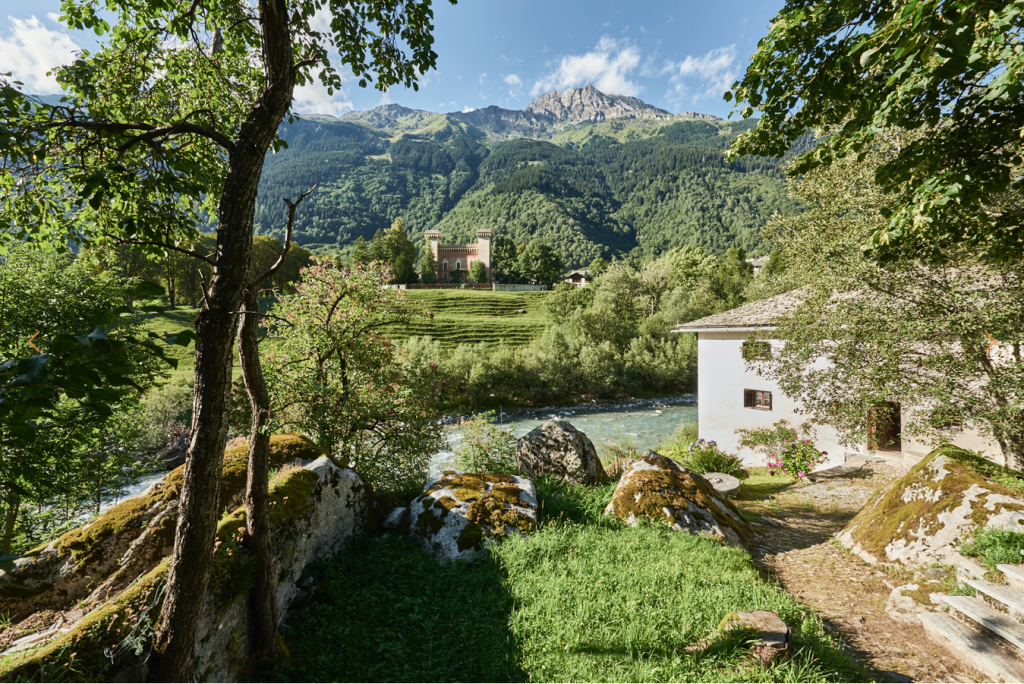
Whether you want to relax or fish on the banks of the river Maira or go for walks along the cultural and historical mule tracks. In Bergell you can enjoy the unspoilt, wild nature to the full. Photo: Ferien im Baudenkmal
Whether you want to relax or fish on the banks of the river Maira or go for walks along the cultural and historical mule tracks. In Bergell you can enjoy the unspoilt, wild nature to the full.
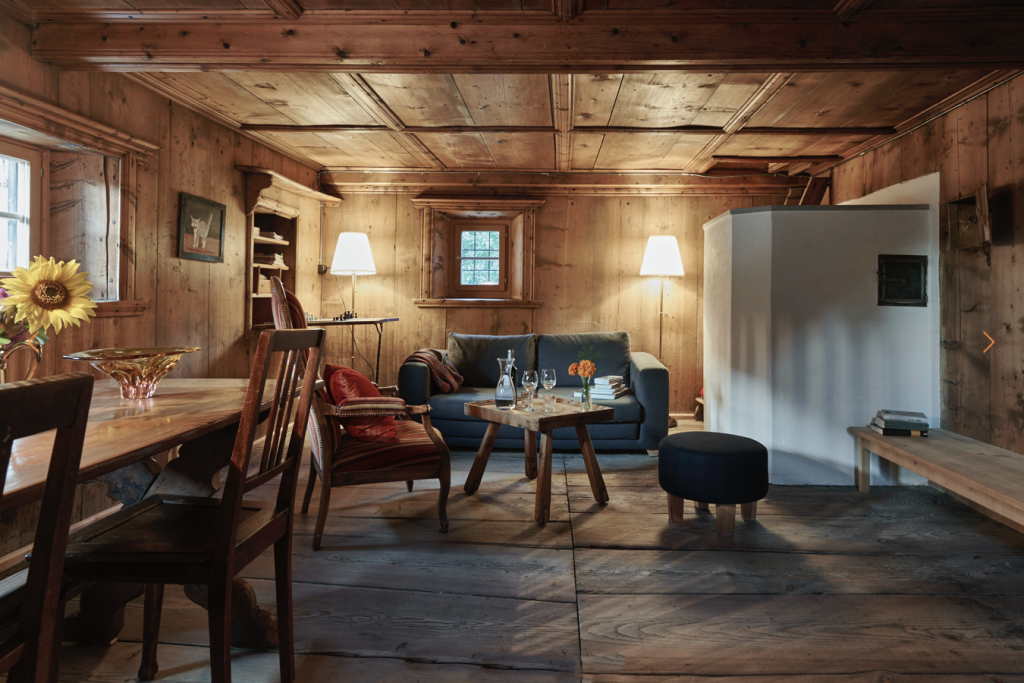
The famous painter Varlin used the Casa Palü as a holiday and guest house. The writer Hugo Loetscher worked at Casa Palü for a long time on his novel “Der Imune”. Photo: Ferien im Baudenkmal
We also recommend, for example, the Casa Döbeli in Russo (TI), the 17th century Ticino burgher house.
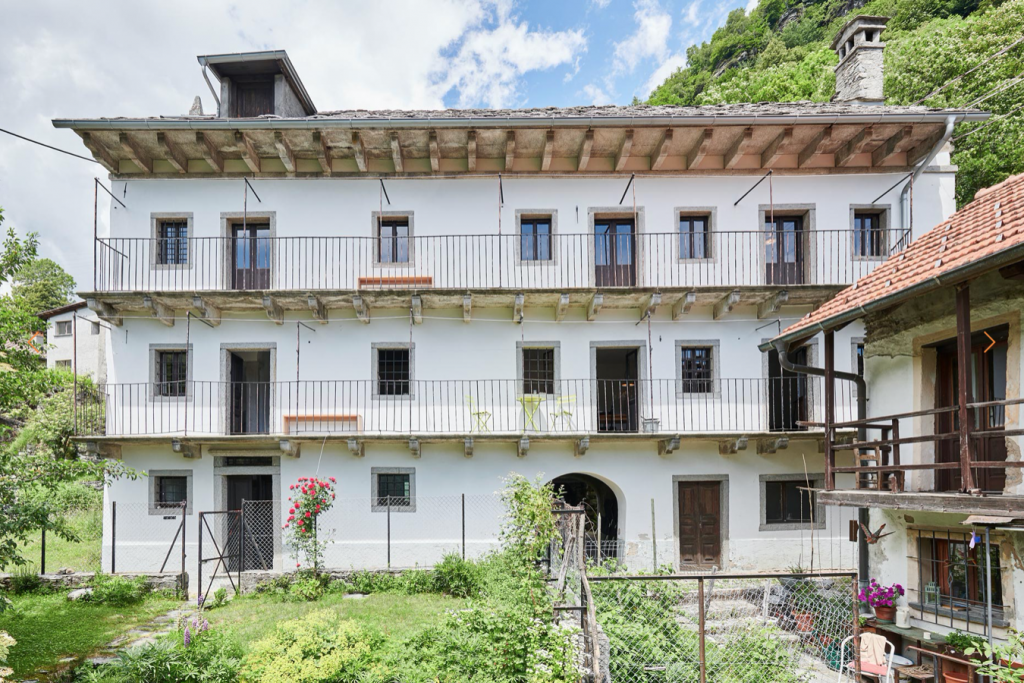
The Casa Döbeli, a Ticino burgher house with characteristic arcades in the mountain village of Russo in the Onsernone Valley, is also a gem. Photo: Ferien im Baudenkmal
The house with its characteristic porticoes is situated in the middle of the mountain village of Russo in the wooded Onsernone valley. In the past, the long porticoes were used to dry the straw in the sun, from which straw hats were woven that were known as far away as nearby Milan. The house took its name from its last inhabitant, Markus Döbeli, a drop-out and philosopher who lived there in the 1960s.
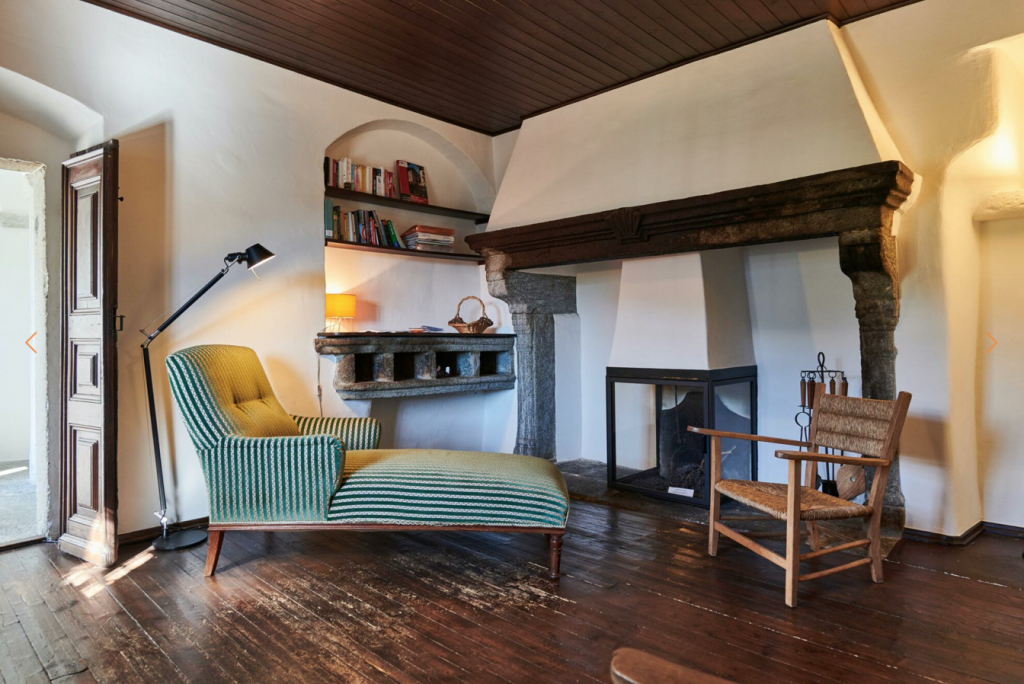
The historic house was handed over to the foundation Ferien im Baudenkmal in 2009 by the Ticino section of the Swiss Heritage Society in the building law. One year later, restoration work began under the direction of the architect Werner Duppenthaler from Mosogno. Photo: Ferien im Baudenkmal
The remote Osernone valley is famous for its wild forests, through which the Isorno has cut deep valleys. The small mountain villages on the sunny slopes are connected by winding roads – former mule tracks – which lead through the beautiful nature. They also pass by the nearby mill of Locco, where today, as 100 years ago, the famous Farina Bóna, the corn flour for polenta, is produced.
The Ferien im Baudenkmal Foundation
The Ferien im Baudenkmal foundation is a project at the interface of tourism and monument preservation. Throughout Switzerland, it takes over listed buildings that are exposed to decay and threatened by demolition, restores them gently and gives them a secure future as holiday homes. What makes it special is that it makes the carefully restored objects accessible to the public at reasonable prices and, through the active experience of building culture, places the emphasis on conveying and raising awareness of historical buildings.
